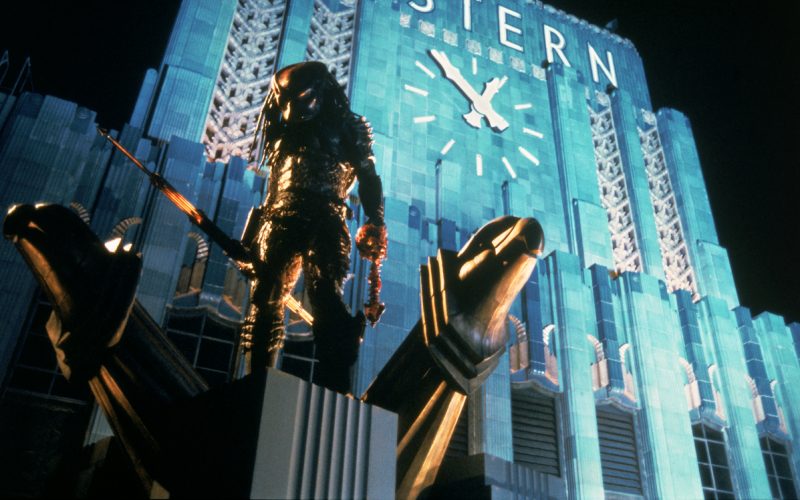In Defence of… Predator 2 (1990).
In what will become a regular feature on Film ’89, we take another look at a maligned and/or misunderstood film that may have not received the credit we think it justly deserves and may be worthy of a second chance. In our second entry in the series, Martin Kessler, filmmaker and host of the brilliant Flixwise podcast, takes a look at the 1990 action/science fiction sequel, Predator 2.
Back in town with a few days to kill.
I think it would be difficult for anyone to argue that John McTiiernan’s 1987 action/science-fiction film Predator is anything short of a classic. The high-concept film set the bar for the sort of testosterone-fuelled, muscle-bound variety of action that was in vogue in the 1980s, and was perhaps only bettered by McTiernan’s follow-up film Die Hard (which wonderfully subverted that muscle-bound action with its more vulnerable hero), and blended it effortlessly with humour, science fiction, and primal horror.
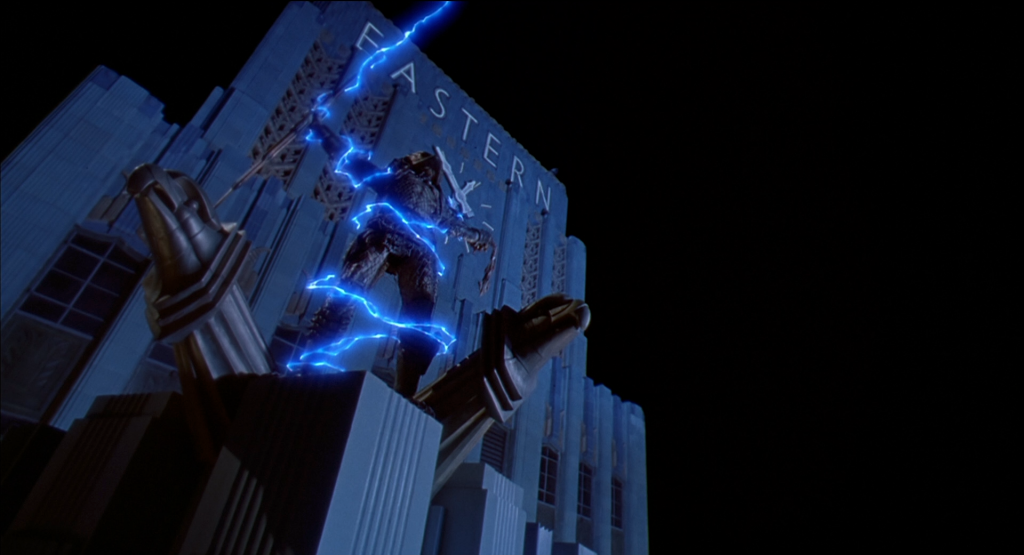
Still, it’s sequel has alway appealed to me more. It was stranger and more artful. I’d often equate the relationship between Predator and Predator 2, with that of Babe and Babe: Pig in The City; that the original could be universally appreciated, but the darker, urban-set sequel offered a more esoteric experience. The sort of of experience that would appeal to a person more deeply or not at all. I wonder if that might be a key distinction between a classic and a cult classic? Speaking “In defence of Predator 2…” feels a little like speaking “In defence of a sharp cheese…”. Regardless, Predator 2 is an angry, sweaty fever dream of a film that I believe is deserving of a reputation greater than its current standing, even amongst fans.
Predator 2 builds laterally on the first film, expanding the universe it created outwards, introducing new possibilities and subverting what had already been established. The action, rather than testosterone-fuelled, feels cocaine fuelled. Impossibly high-bursts of energy, full of potent images that exist in a haze on the edge-of perception.
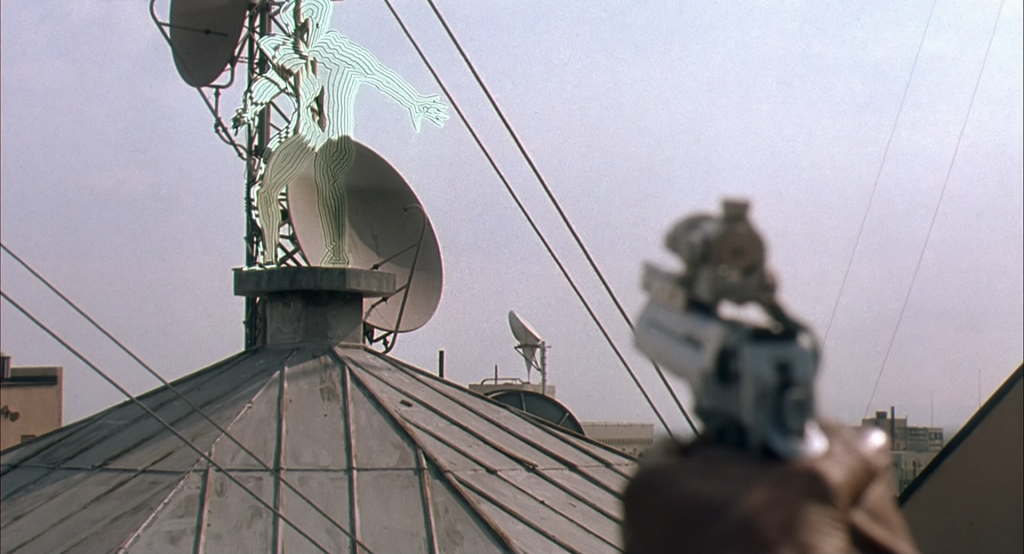
Released in 1990, the film is set in the then future of 1997. Little is done to give the impression of ‘the future’, rather that choice seems more of a pretext to create a heightened, nightmarish version of Los Angeles. A hotter, more violent version of Los Angeles. Sweat patches and sticky clothes are a common sight in Predator 2. The Predator is a creature “drawn to heat and conflict”, and it’s easy to be reminded of the statistical correlation between heat waves and crime waves. From the first scene, a tone of sunstricken irrationality is set.
The design of the Predator itself is subtly altered. The futuristic silver armour of the original is replaced with a bronze armour, giving the impression of something more ancient. And Kevin Peter Hall (the only returning actor from the first film) plays this new incarnation of the creature with a more youthful bravado, giving it a personality distinct from the creature of the first film. Less cautious and more willing to show-off as it kills its way through the ranks of cops and Colombian and Jamaican gangsters. It’s perhaps noteworthy that the Predator’s look incorporates Caribbean and Pre-Colombian American motifs, making it feel more at home in the world of the film than an alien might be expected to be.

Of course the Predator isn’t the hero of the film, that status falls on Danny Glover playing a police Lieutenant named Harrigan. Lacking the body-builder physicality of Arnold Schwarzenegger in the original, it’s Harrigan’s personality that makes him a credible hero; his quick thinking and tenacious determination. It’s really wonderful watching Glover walk the tight-rope of playing a hero who simultaneously feels like an underdog (his constant huffing and puffing, his fear of heights) and credibly never lets the monster get the upper-hand on him. There’s no scene comparable to the one near the end of the original Predator where it has the opportunity to kill Schwarzenegger’s character but spares him to have a fair fight. Glover’s character makes the conscious decision to hunt down the monster, overcomes the barrage of obstacles thrown at him, and ultimately becomes the more compelling hero.
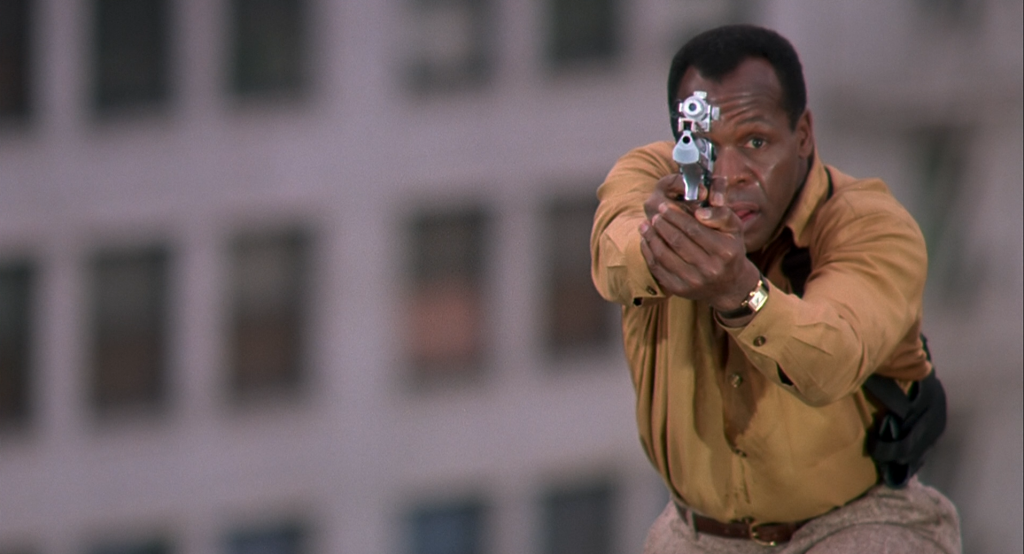
Predator 2 is rounded out with a superb supporting cast as well.There’s Bill Paxton (coming off of ’80s genre classics such as Aliens and Near Dark) and María Conchita Alonso (who co-starred with Arnold Schrwazenegger in 1987’s The Running Man, and had just appeared in the cult film Vampire’s Kiss along side Nicholas Cage) who bring their character-actor sensibilities to their roles. Panamanian singer/songwriter Rubén Blades has a sizeable role as a cop in the first act, and perhaps contributes to the neo-noir qualites of Predator 2, having just worked with Jack Nicholson in the Chinatown sequel, The Two Jakes. Gary Busey is extremely memorable in his first role after his brain damage-inducing motorcycle crash. Busey spends most of the film playing his character relatively subdued and straight-laced, but there’s a wonderful, almost manic tension to his performance that finally explodes into the sort madness he would become associated with, yelling “Guess who’s back?” and “Too late to go home now!” in an effectively unhinged way at the Predator towards the film’s last act.
Though, of the supporting cast, my favourite performance is by Calvin Lockhart, a Shakespearian actor from Kingston (perhaps most recognized for his appearance in David Lynch’s Wild At Heart). Lockhart plays Jamaican drug lord, King Willie, a character that defines the tone of the film, which is to say both mythic and Grand Guignol.
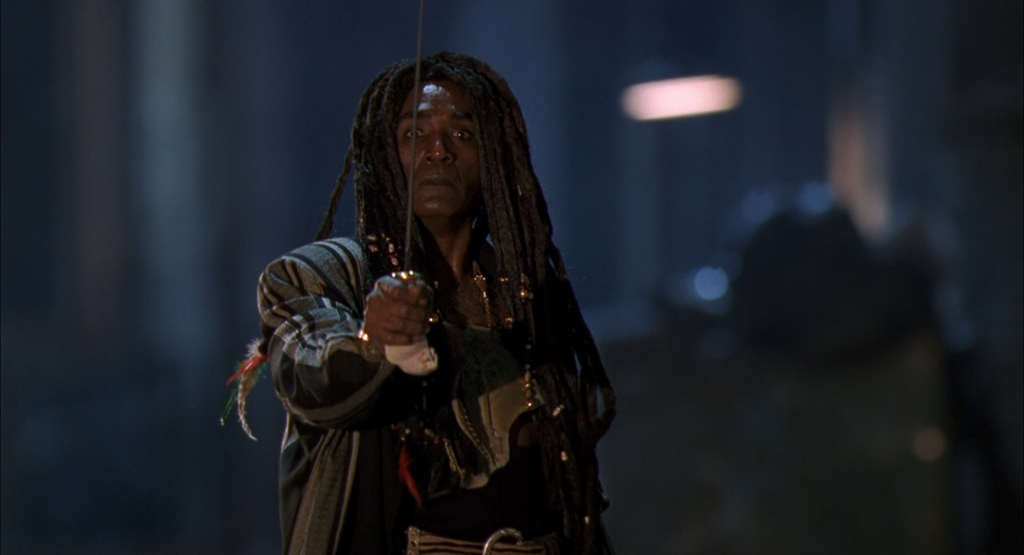
There’s the moment where King Willie prepares to fight the Predator, who walks towards him invisible, only his footsteps appearing in splashes of water (an image that prefigures one of the most iconic scenes in the 1995 animated masterpiece Ghost in The Shell). In a moment reminiscent of Jacques Tourneur’s Cat People, King Willie pulls a sword from his cane and stares down his unnatural foe. He has the most memorable death in the film, a close-up of his screaming face, followed by the reveal that his head has been severed from his body.

I keep thinking of how easy it would have been to simply remake the beats of the first film only in an urban environment, but Predator 2 really goes the distance in forging a distinct identity as a film. Nowhere is that more apparent than in its final act. The last thirty-five minutes appear to play in real time, and is perhaps the most perfectly paced sequence I’ve seen in an action film.
The sequence begins with the clever reversal of having Busey’s character and his team laying a trap for the Predator in a meat-packing plant, using insulated suits to become invisible to the infrared vision of the alien creature. With their masks and shoulder-mounted ultra-violet lights, the team even resembles the Predator.
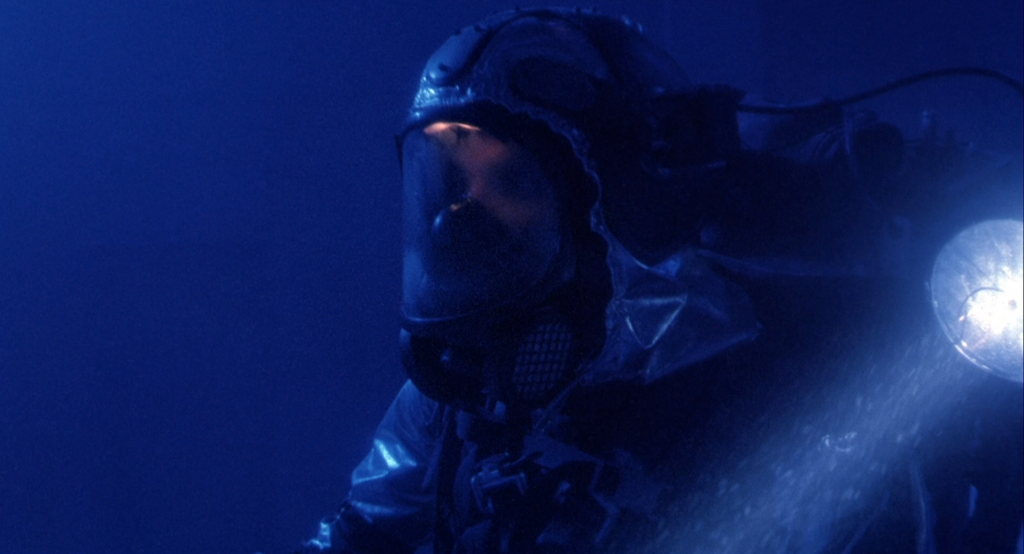
Of course it’s only a set-up for a great double-reversal, as it’s revealed that the Predator’s mask allows it to filter through other spectrums of light. And for a few moments, a big Hollywood action film could be mistaken for a Brakhage film.
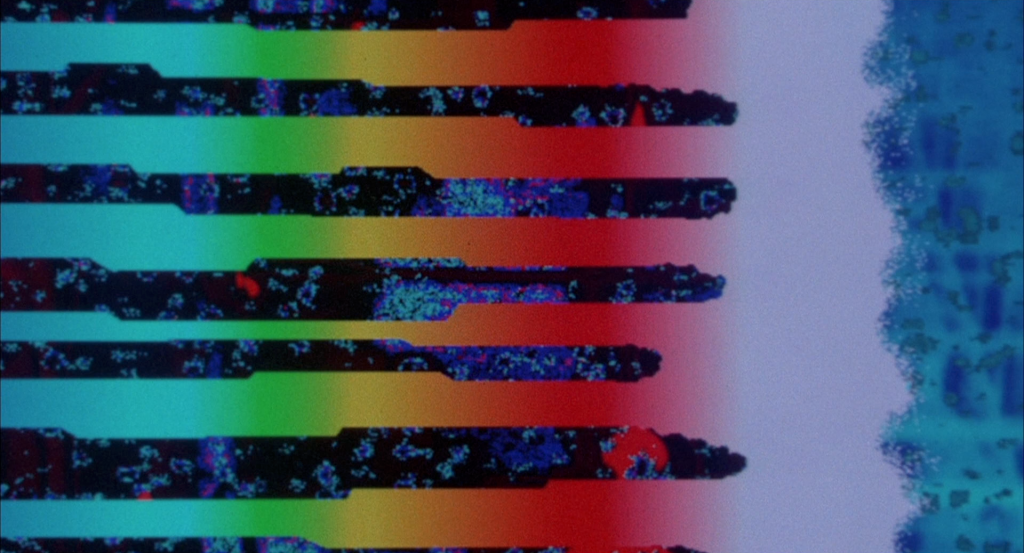
Really, everything in the meat-packing plant set-piece has such a different look to it than what might be expected of an action film. The rich blues and dabs of red in its colour pallet give it a certain painterly quality. There’s possibly even a deliberate evocation of Francis Bacon’s ‘Figure With Meat’ after Glover’s character removes the Predator’s mask. It’s wonderfully grotesque.
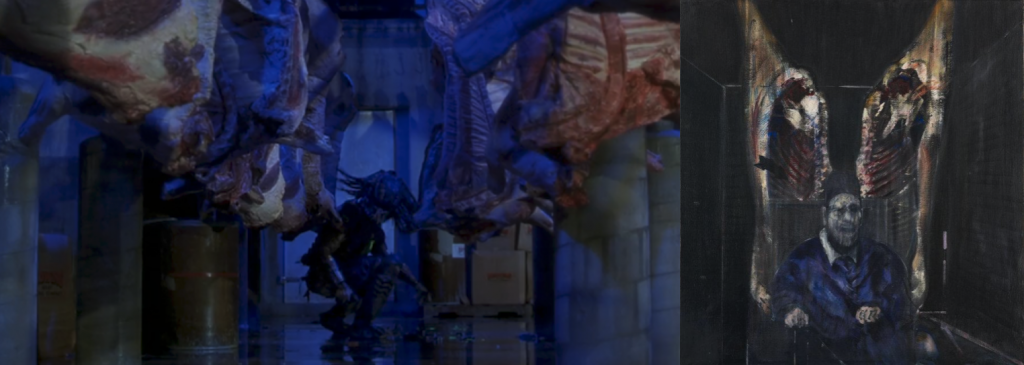
Jamaican born director Stephen Hopkins had a background in set and production design, which Predator 2 benefits from in the attention to detail and tactile quality of its unusual environments and props. Though I think Hopkins’ greatest contribution to the film is his coherent visual storytelling and his touch for the darkly mythic (expounded upon in his later films like The Ghost and The Darkness).
The film seems to build to an entirely satisfactory climax, as Glover’s character chases the Predator onto a rooftop, which seems to call back to the first time he glimpsed the monster. No one left but the hero and the monster. Soon the two find themselves hanging off the edge of a building, and much like the first film, the Predator initiates a self-destruct sequence on its electronic wrist mounted device. It’s when Glover’s character grabs the Predator’s disc weapon and slices the explosive device (along with the Predator’s arm) in half. It brazenly subverts that entirely satisfactory climax, and in doing so makes the declaration that what would come next would be greater than satisfactory, it would be exceptional.
There’s a brief respite for the Predator to administer first aid to itself, and for the audience to breathe. A cleansing of the palate in preparation for the spectacular final set piece. I don’t want to gloss over the first aid scene though. Building on a beat from the first film there’s a sense of ritual as it administers a pain killer and uses a chemical and drywall silica solution to cauterise its wounds. I thought it was interesting that Stephen Hopkins at one point suggested that the scene be used in isolation as the teaser trailer for the film. It’s so evocative that that might have worked.
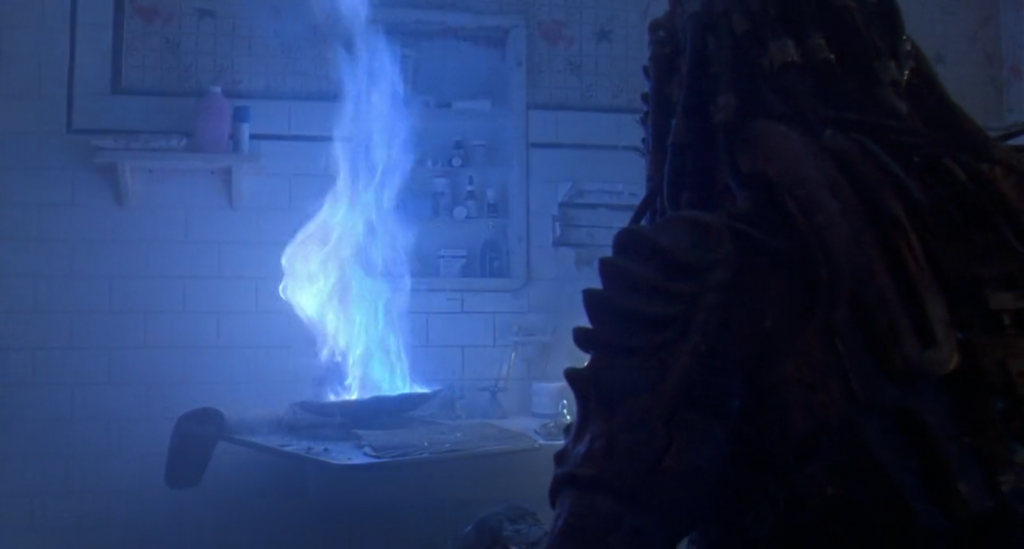
The dynamic now changes so that instead of stalking, the wounded Predator is now on the run with Glover’s character in hot pursuit. He follows the creature all the way to its spaceship where it has nowhere left to run.
The spaceship set is so wonderfully realized; both alien in its asymmetry and familiar in its primordial atmosphere. The pulsating roof makes it feel like you’re in the beating heart of darkness. And that trophy wall, that famously ignited so much fan speculation with its Alien Xenomorph skull. Still the thing I like most about that trophy wall is that even amongst space monsters, man is the most dangerous game.
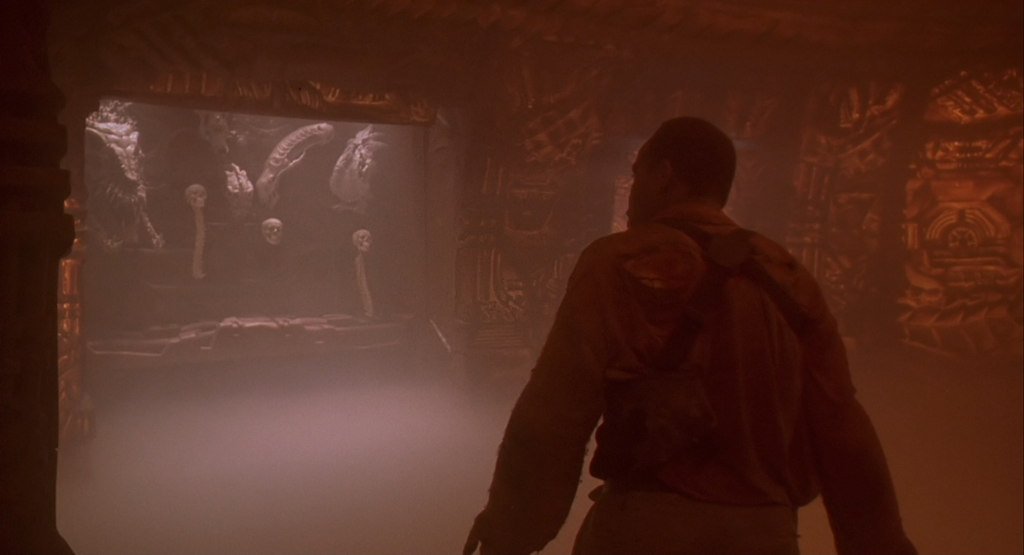
Then the final confrontation begins. The short reach of their bladed weapons adds an intimacy to their final fight. And it’s here that the weight and power of the Predator is most greatly felt, constantly forcing Glover’s character back throughout. The cuts are so fast and so deliberate. Editor Mark Goldblatt would bring his A-game (and maybe a little extra) here, and would go on to edit similarly incredible sequences in Terminator 2 and Starship Troopers.
There’s one shot that sticks out in my mind as singularly brilliantly conceived. The camera arcs from left-to-right, while the actors arc from right to left. That they move in opposite directions doubles the impression of speed, and the curvature of their motion creates the sort of dynamic sense of depth that might be achieved artificially with a fish-eye lens. It’s the highlight of an impressive fight scene. Not that it’s all just an empty display of style. There’s an emotional resonance as I’m reminded of Thesius locked in combat with the minotaur at the centre of the Labyrinth. Dark and mythic and ancient.
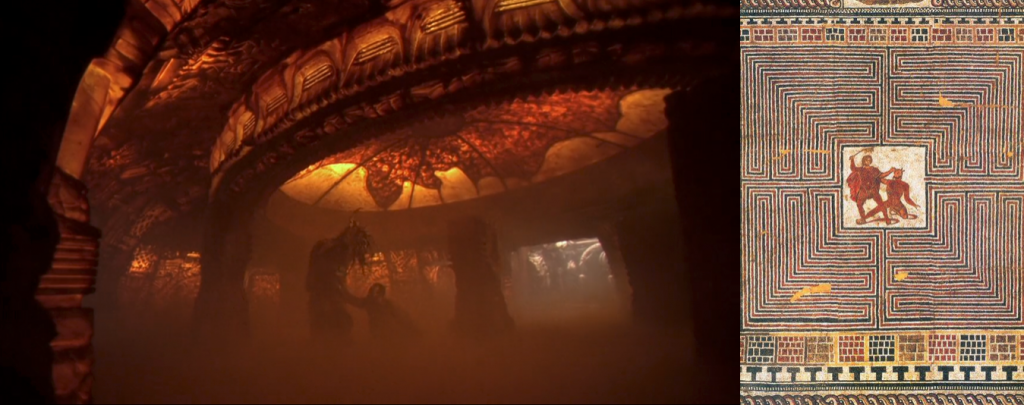
That quality is further underscored once Glover’s character has killed the Predator. It’s revealed that its tribe watched the display. Invisible spectators as much as anyone watching the film. The aliens look at Glover’s character with respect and leave him with a trophy of his victory; a pistol from 1715 hinting at the ancient role the creatures may have played in humanity’s history. A science fiction film that connects us to the past more than the future. Something I’m particularly fond of (my favourite science fiction film in recent years is Aleksei German’s 2013 film, Hard to Be a God).
Predator 2 ends with one final inversion of the first film. While the original ended with Schwarzenegger covered in black mud, haunted by the death of his team, Predator 2 has Glover covered in white ash (which might evoke ritualistic makeup) blasted onto him by the departed spaceship, a hint of bemusement as he tells the last surviving member of Busey’s team (played by Adam Baldwin who had played Animal Mother in Full Metal Jacket) that he’d get another chance at catching the Predator. He’s not someone traumatized by his encounter with darkness, rather he’s someone who’s seen a corner of his world peeled back to reveal its strangeness and leaves with a deeper understanding of the universe.

Going into so much detail with the ending might seem like I’m spoiling the film for people who haven’t seen it, but I don’t believe you can spoil an experience as potent as watching Predator 2, only re-live it. And for those who have seen it and were not as impressed as I am with it, I hope this might give you cause to revisit it, to let the experience wash over you, and perhaps find value in the experience and obtain insights of your own from it. Happy hunting.
Film ’89 Verdict – 8.5/10

